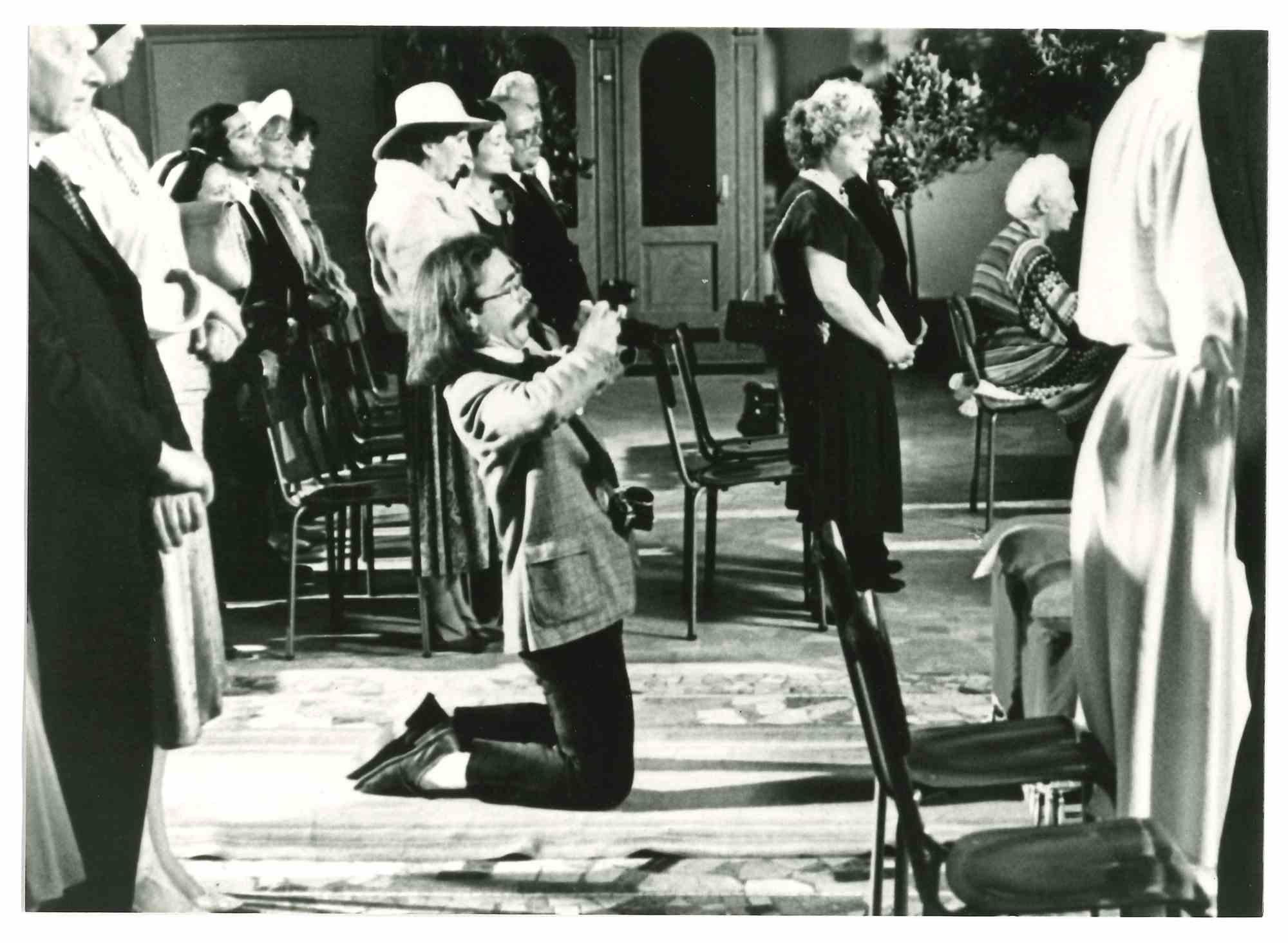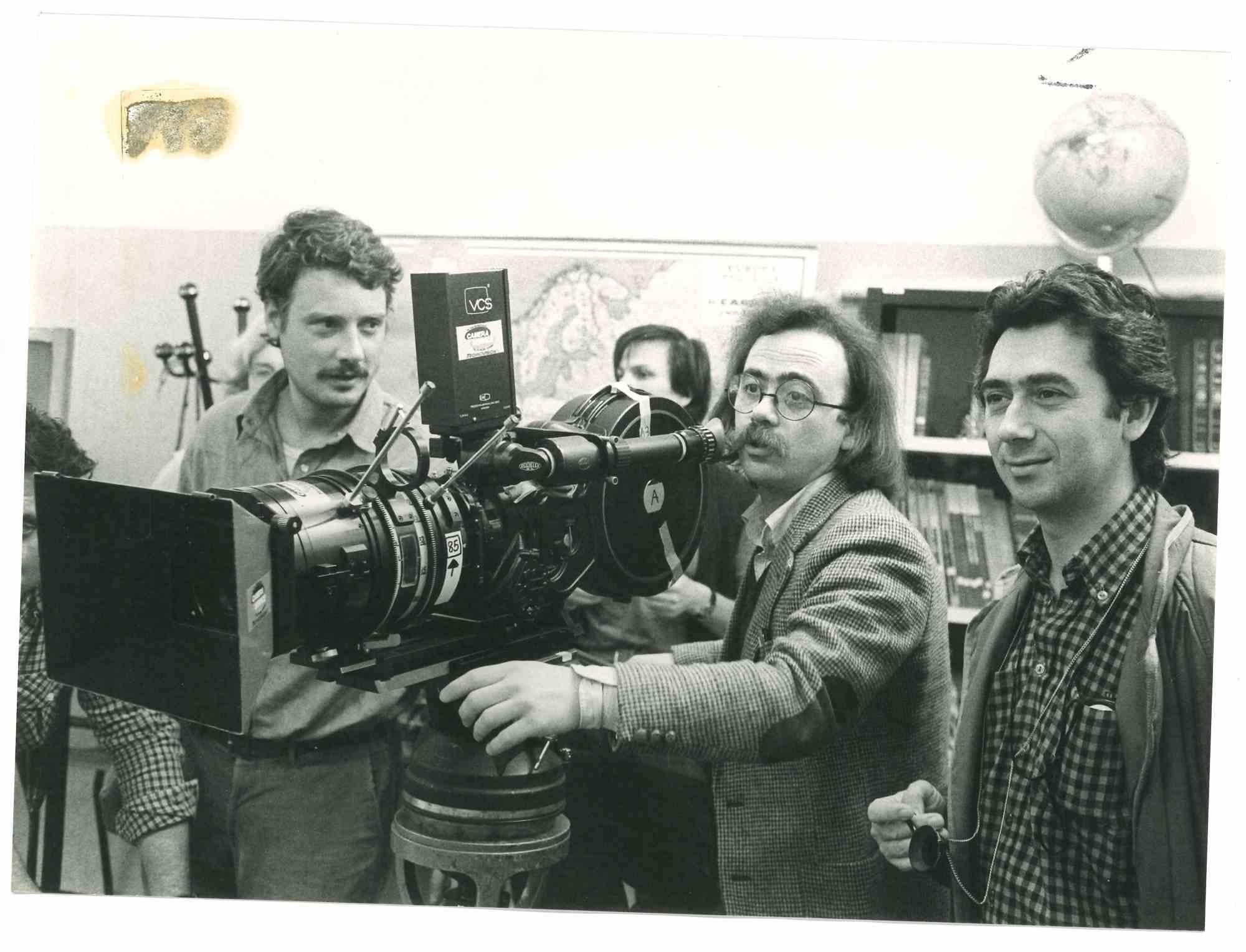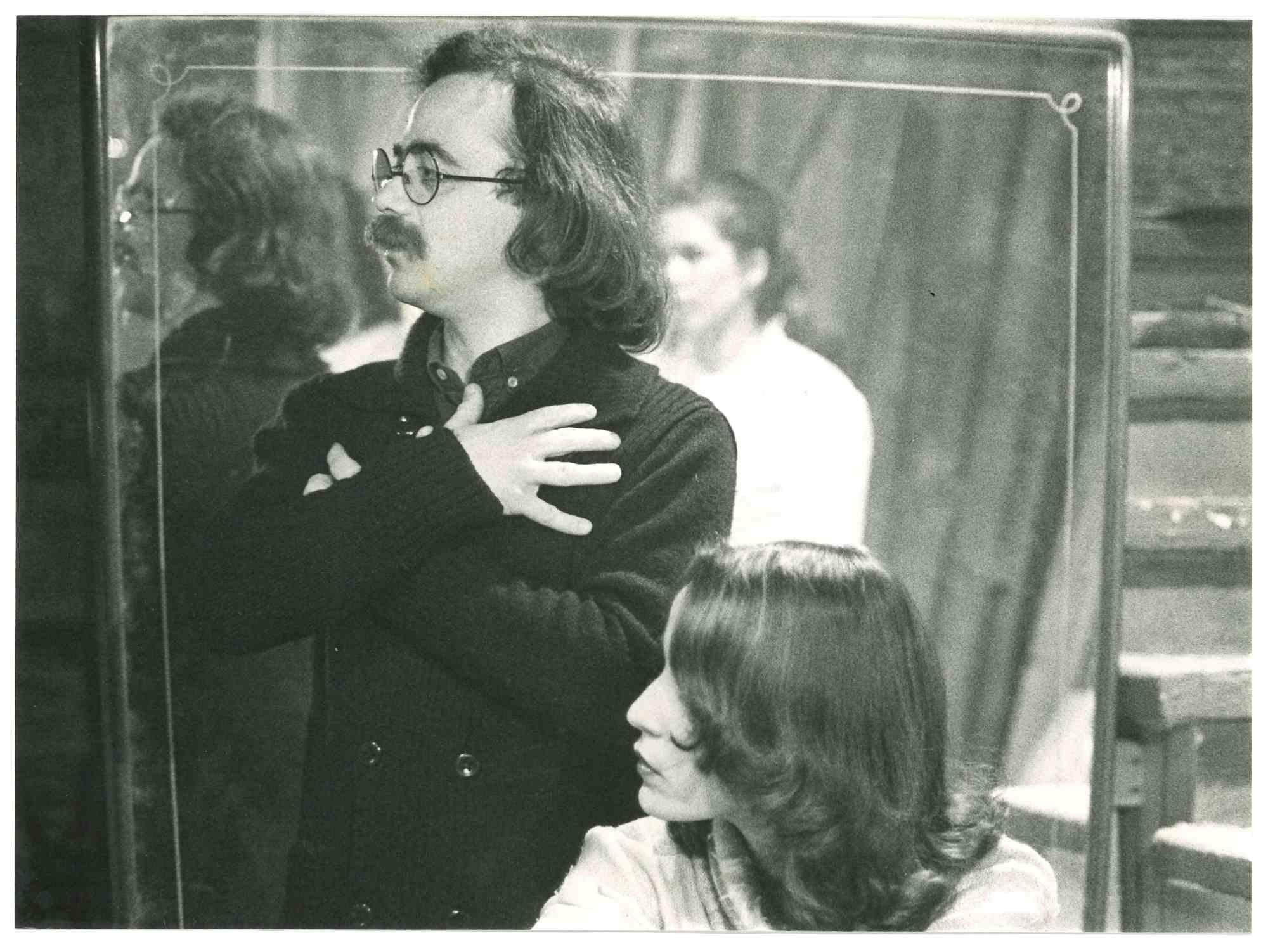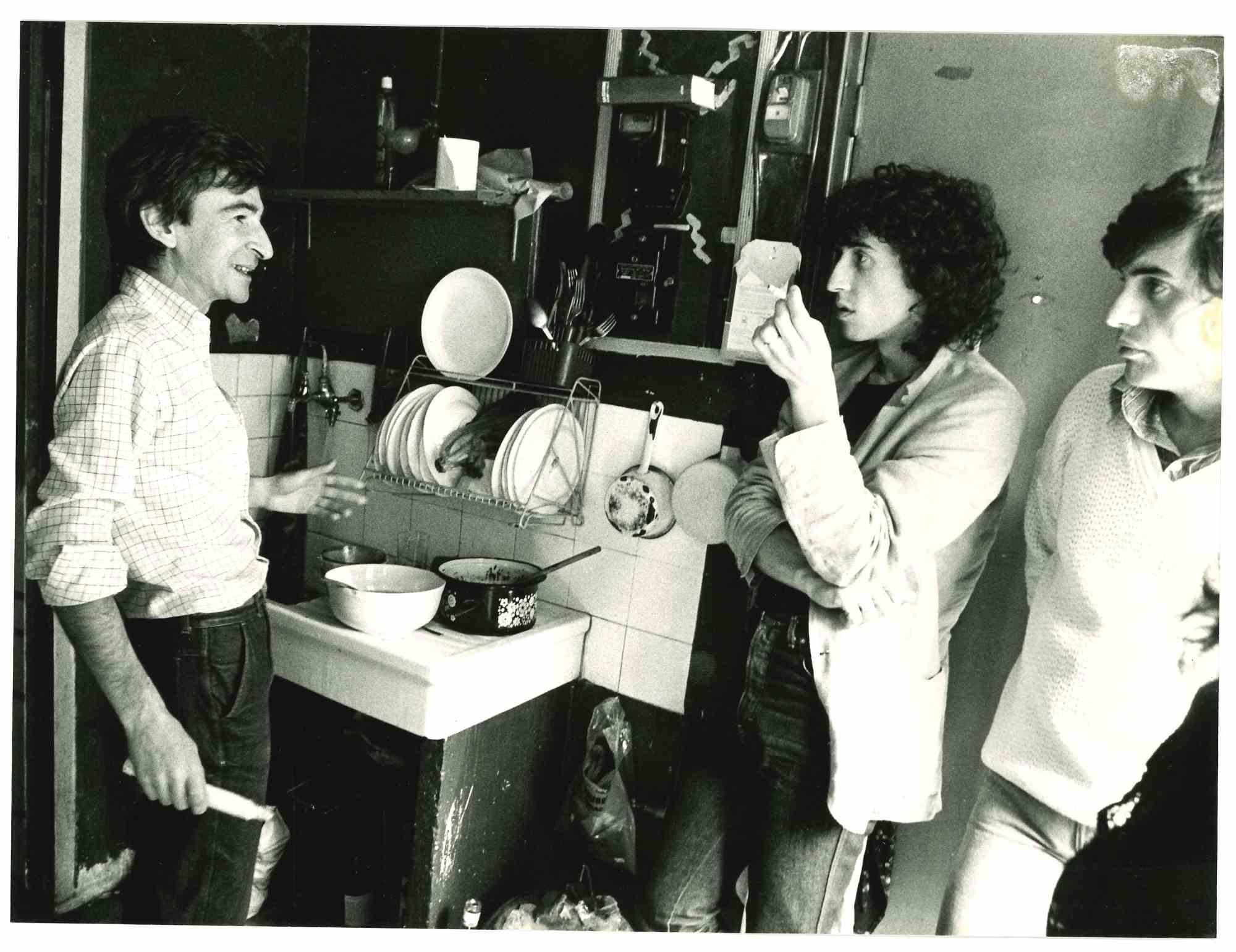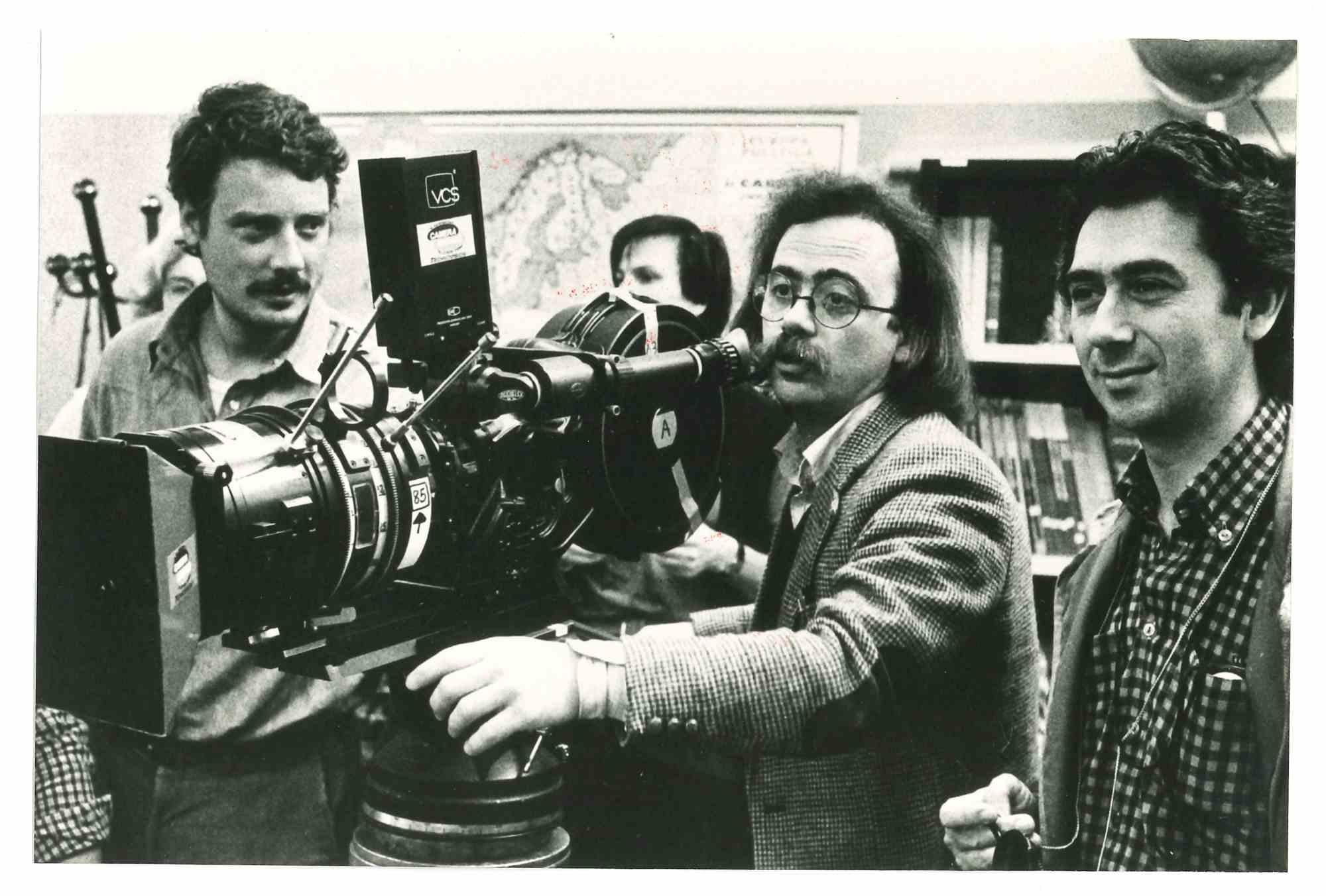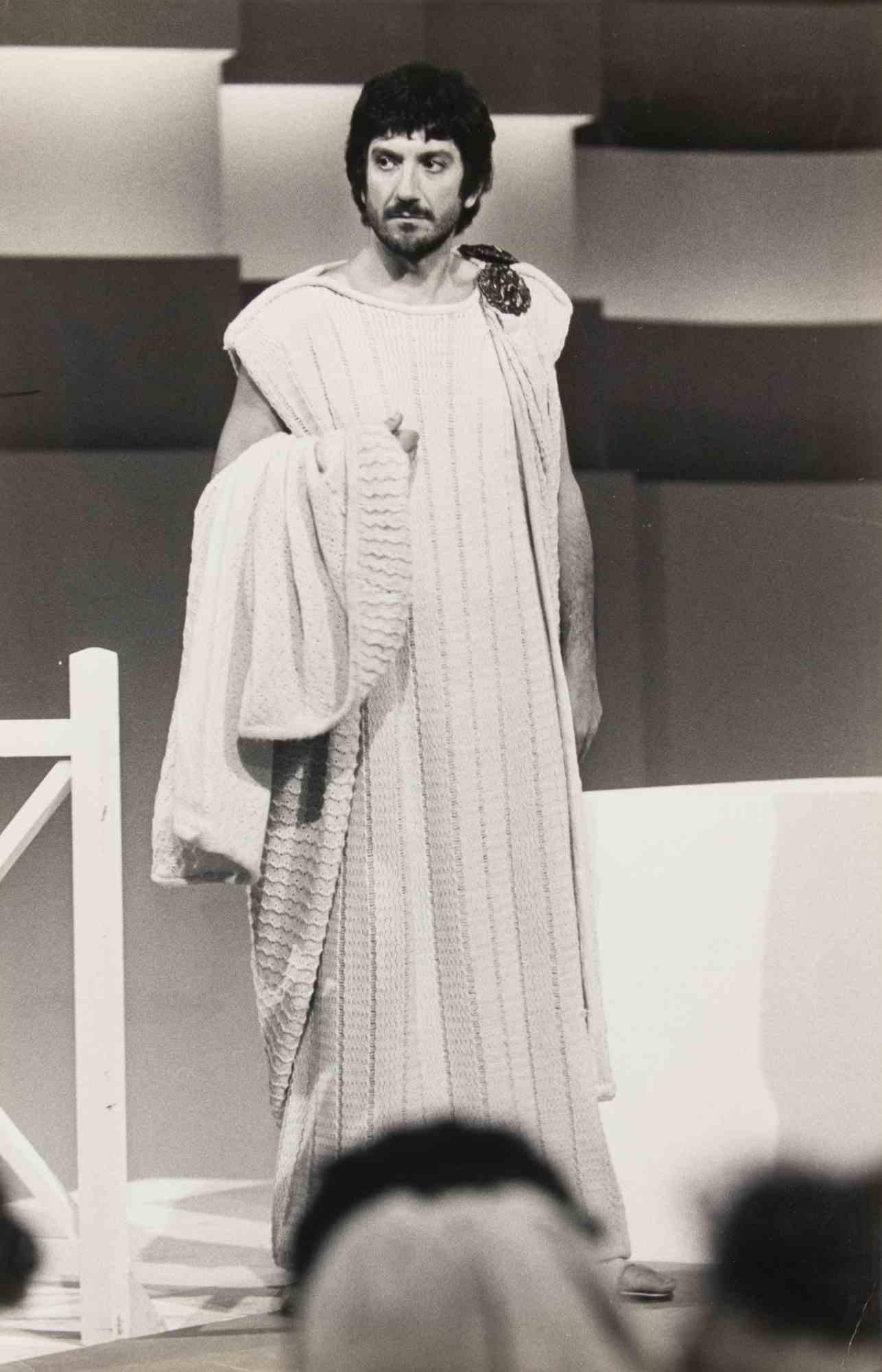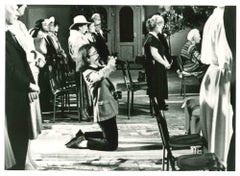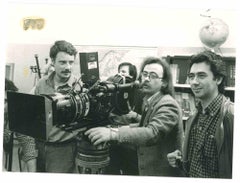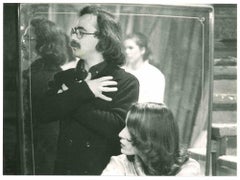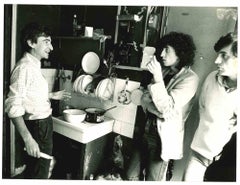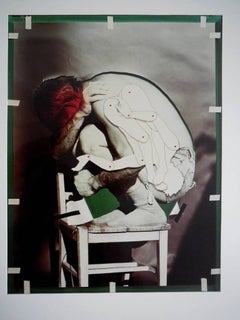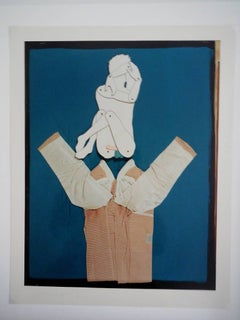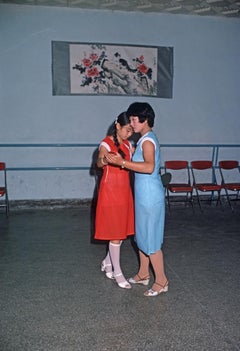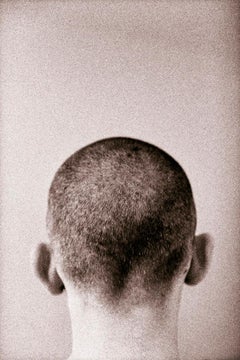Items Similar to Maurizio Nichetti - Vintage Photograph - 1980s
Want more images or videos?
Request additional images or videos from the seller
1 of 2
UnknownMaurizio Nichetti - Vintage Photograph - 1980s1980s
1980s
$176.90
£132.41
€150
CA$243.46
A$271.36
CHF 142.37
MX$3,313.76
NOK 1,802.76
SEK 1,703.88
DKK 1,141.91
About the Item
Maurizio Nichetti - Vintage Photograph is an original black and white photograph realized by an anonymous artist in the 20th Century.
Good conditions.
Maurizio Nichetti is a well-known Italian actor and director.
Filmography:
1979 - Ratataplan
1976 - Allegro non troppo
1982 - Tomorrow We Dance (Domani si balla!)
1983 - Hearts and Armour (I Paladini: Storia d'armi e d'amori)
1984 - Bertoldo, Bertoldino e Cacasenno
1989 - The Icicle Thief (Ladri di saponette)
1991 - To Want to Fly (Volere volare)
1993 - Stefano Quantestorie
1994 - Seven Sundays (Tous les jours dimanche)
1995 - Snowball (Palla di neve)
1996 - Luna e l'altra
2002 - Ciao America
2010 - Somewhere
- Creation Year:1980s
- Dimensions:Height: 6.7 in (17 cm)Width: 9.45 in (24 cm)Depth: 0.04 in (1 mm)
- Medium:
- Movement & Style:
- Period:
- Framing:Framing Options Available
- Condition:Insurance may be requested by customers as additional service, contact us for more information.
- Gallery Location:Roma, IT
- Reference Number:Seller: T-1283931stDibs: LU65039357372
About the Seller
4.9
Platinum Seller
Premium sellers with a 4.7+ rating and 24-hour response times
1stDibs seller since 2017
7,627 sales on 1stDibs
Typical response time: 2 hours
- ShippingRetrieving quote...Shipping from: Monaco, Monaco
- Return Policy
Authenticity Guarantee
In the unlikely event there’s an issue with an item’s authenticity, contact us within 1 year for a full refund. DetailsMoney-Back Guarantee
If your item is not as described, is damaged in transit, or does not arrive, contact us within 7 days for a full refund. Details24-Hour Cancellation
You have a 24-hour grace period in which to reconsider your purchase, with no questions asked.Vetted Professional Sellers
Our world-class sellers must adhere to strict standards for service and quality, maintaining the integrity of our listings.Price-Match Guarantee
If you find that a seller listed the same item for a lower price elsewhere, we’ll match it.Trusted Global Delivery
Our best-in-class carrier network provides specialized shipping options worldwide, including custom delivery.More From This Seller
View AllMaurizio Nichetti - Vintage Photograph - 1980s
Located in Roma, IT
Maurizio Nichetti - Vintage Photograph is an original black and white photograph realized in the 1980s
Good conditions.
Maurizio Nichetti is a well-known Italian actor and director...
Category
1980s Modern Figurative Photography
Materials
Photographic Paper
Maurizio Nichetti - Vintage Photograph - 1980s
Located in Roma, IT
Maurizio Nichetti - Vintage Photograph is an original black and white photograph realized by an anonymous artist in the1980s
Good conditions.
Maurizio Nichetti is a well-known Ital...
Category
1980s Modern Figurative Photography
Materials
Photographic Paper
Maurizio Nichetti - Vintage Photograph - 1970s
Located in Roma, IT
Rina Morelli (italian actress) - Vintage Photograph is an original black and white photograph realized by an anonymous artist in the 1970s.
Good conditions.
Category
1970s Contemporary Figurative Photography
Materials
Photographic Paper
Maurizio Nichetti - Vintage Photograph - 1980s
Located in Roma, IT
Maurizio Nichetti - Vintage Photograph is an original black and white photograph realized by an anonymous artist in the1980s
Good conditions.
Maurizio Nichetti is a well-known Ital...
Category
1980s Modern Figurative Photography
Materials
Photographic Paper
Maurizio Nichetti - Vintage Photograph - 1980s
Located in Roma, IT
Maurizio Nichetti - Vintage Photograph is an original black and white photograph realized in the 1980s
Good conditions.
Maurizio Nichetti is a well-known Italian actor and director...
Category
1980s Modern Figurative Photography
Materials
Photographic Paper
Gigi Proietti - Vintage Photograph - 1970s
Located in Roma, IT
Gigi Proietti is a black and white vintage photo, realized in 1970s.
The photo depicts the italian actor and showman, Luigi Proietti.
Good conditions and aged.
It belongs to a his...
Category
1970s Contemporary Figurative Photography
Materials
Photographic Paper
You May Also Like
Rare Harry Bowers Vintage C Print Photograph From Ten Photographs Fashion Photo
By Harry Bowers
Located in Surfside, FL
HARRY BOWERS
T E N P H O T O G R A P H S
I DON'T LOOK FOR PHOTOGRAPHS I INVENT THEM
I recall my first meeting with Harry Bowers in California a few years ago. As he produced his large-scale prints, I was at first flabbergasted, not only by their size, but by their seamless perfection. Technique appeared to be everything but then technique as technique simply vanished. After the first moment, technique was no longer an issue, but rather a passageway to the imagery.
Suffice it to say about Harry Bowers' working style that he is an obsessive man. Trained as an engineer, he has turned that discipline to art. His lenses, equipment and darkroom, much of it exactingly manufactured by himself to answer certain needs, serve the desire of the artist to take photographic technique to its ultimate perfection in invisibility and transparency. I respect obsession in art, and particularly in photography, because obsession in photography passes beyond the easy, middle ground of image making to a more demanding, more difficult, yet more rewarding end. Bowers' obsession is to eliminate "photography as technique." No grain, no decisive moments, no journalism, or, seemingly, direct autobiographical endeavors appear in his work.
Bowers is an artist of synthesis who controls his environment if only in the studio exactly to his liking. The images he creates are formal structures, saucy stories on occasion, which may offer hints of a darker, more frightening sexuality, but what you see is the end product of an experiment in which nothing save the original insight perhaps is left to chance.
We seem fascinated with the idea of replication of reality in art. Popular painting frequently reproduces a scene "with the accuracy of a photograph," and photographs may "make you feel as though you were right there." The very invisibility of the photographic medium is important to Bowers, in that it allows him to maneuver his subject matter without concern for rendering it in an obvious art medium which would interfere with the nature of the materials he uses. The formal subtleties of Bowers' recent work are as delicious and ambiguous in their interrelationships as the best Cubist collages, yet while those collages always suggest their parts through edge and texture, these photographs present a structure through a surface purity.
Bowers' earlier works, for example, the Skirts I Have Known series, were formed of bits of clothing belonging to Bowers and his wife or found at local thrift shops. These works fused an elegance of pattern and texture, reminiscent of Miriam Shapiro...
Category
1980s Photography
Materials
Photographic Paper
Large Harry Bowers Vintage C Print Photograph From Ten Photographs Fashion Photo
By Harry Bowers
Located in Surfside, FL
HARRY BOWERS
T E N P H O T O G R A P H S
I DON'T LOOK FOR PHOTOGRAPHS I INVENT THEM
I recall my first meeting with Harry Bowers in California a few years ago. As he produced his large-scale prints, I was at first flabbergasted, not only by their size, but by their seamless perfection. Technique appeared to be everything but then technique as technique simply vanished. After the first moment, technique was no longer an issue, but rather a passageway to the imagery.
Suffice it to say about Harry Bowers' working style that he is an obsessive man. Trained as an engineer, he has turned that discipline to art. His lenses, equipment and darkroom, much of it exactingly manufactured by himself to answer certain needs, serve the desire of the artist to take photographic technique to its ultimate perfection in invisibility and transparency. I respect obsession in art, and particularly in photography, because obsession in photography passes beyond the easy, middle ground of image making to a more demanding, more difficult, yet more rewarding end. Bowers' obsession is to eliminate "photography as technique." No grain, no decisive moments, no journalism, or, seemingly, direct autobiographical endeavors appear in his work.
Bowers is an artist of synthesis who controls his environment if only in the studio exactly to his liking. The images he creates are formal structures, saucy stories on occasion, which may offer hints of a darker, more frightening sexuality, but what you see is the end product of an experiment in which nothing save the original insight perhaps is left to chance.
We seem fascinated with the idea of replication of reality in art. Popular painting frequently reproduces a scene "with the accuracy of a photograph," and photographs may "make you feel as though you were right there." The very invisibility of the photographic medium is important to Bowers, in that it allows him to maneuver his subject matter without concern for rendering it in an obvious art medium which would interfere with the nature of the materials he uses. The formal subtleties of Bowers' recent work are as delicious and ambiguous in their interrelationships as the best Cubist collages, yet while those collages always suggest their parts through edge and texture, these photographs present a structure through a surface purity.
Bowers' earlier works, for example, the Skirts I Have Known series, were formed of bits of clothing belonging to Bowers and his wife or found at local thrift shops. These works fused an elegance of pattern and texture, reminiscent of Miriam Shapiro...
Category
1980s Arte Povera Photography
Materials
Photographic Paper, C Print
Take Two by Alain Le Garsmeur
By Alain Le Garsmeur
Located in London, GB
Take Two by Alain Le Garsmeur
Two dancers in a bomb shelter used as a nightclub, Harbin, Heilongjiang Province, China, 1985.
Paper size 24 x 20 inches / 60 ...
Category
1980s Color Photography
Materials
Archival Pigment
Untitled #69
By Henry Horenstein
Located in New York, NY
Sepia-toned gelatin silver print
Signed and numbered, verso
20 x 16 inches, sheet
(Edition of 25)
This photograph is offered by ClampArt, located in New York City.
“These are not ...
Category
Early 2000s Other Art Style Figurative Photography
Materials
Silver Gelatin
Chailles
Located in New York, NY
The work is available as Silver gelatin print, by the artist, made in the darkroom, from the original 35 mm black and white negative and in a total edition of 25.
Available in 4 siz...
Category
Early 2000s Contemporary Black and White Photography
Materials
Photographic Paper, Black and White, Silver Gelatin
Rare Harry Bowers Vintage C Print Photograph From Ten Photographs Fashion Photo
By Harry Bowers
Located in Surfside, FL
HARRY BOWERS
T E N P H O T O G R A P H S
I DON'T LOOK FOR PHOTOGRAPHS I INVENT THEM
I recall my first meeting with Harry Bowers in California a few years ago. As he produced his large-scale prints, I was at first flabbergasted, not only by their size, but by their seamless perfection. Technique appeared to be everything but then technique as technique simply vanished. After the first moment, technique was no longer an issue, but rather a passageway to the imagery.
Suffice it to say about Harry Bowers' working style that he is an obsessive man. Trained as an engineer, he has turned that discipline to art. His lenses, equipment and darkroom, much of it exactingly manufactured by himself to answer certain needs, serve the desire of the artist to take photographic technique to its ultimate perfection in invisibility and transparency. I respect obsession in art, and particularly in photography, because obsession in photography passes beyond the easy, middle ground of image making to a more demanding, more difficult, yet more rewarding end. Bowers' obsession is to eliminate "photography as technique." No grain, no decisive moments, no journalism, or, seemingly, direct autobiographical endeavors appear in his work.
Bowers is an artist of synthesis who controls his environment if only in the studio exactly to his liking. The images he creates are formal structures, saucy stories on occasion, which may offer hints of a darker, more frightening sexuality, but what you see is the end product of an experiment in which nothing save the original insight perhaps is left to chance.
We seem fascinated with the idea of replication of reality in art. Popular painting frequently reproduces a scene "with the accuracy of a photograph," and photographs may "make you feel as though you were right there." The very invisibility of the photographic medium is important to Bowers, in that it allows him to maneuver his subject matter without concern for rendering it in an obvious art medium which would interfere with the nature of the materials he uses. The formal subtleties of Bowers' recent work are as delicious and ambiguous in their interrelationships as the best Cubist collages, yet while those collages always suggest their parts through edge and texture, these photographs present a structure through a surface purity.
Bowers' earlier works, for example, the Skirts I Have Known series, were formed of bits of clothing belonging to Bowers and his wife or found at local thrift shops. These works fused an elegance of pattern and texture, reminiscent of Miriam Shapiro...
Category
1980s Photography
Materials
Photographic Paper
More Ways To Browse
Vintage Icicle
Sacred Heart
Vintage Air Force
White Minimalist Sculpture
Botanical Engraving
Chagall Galerie Maeght
Sculptures Woman And Man
Antique World War Ii
Vintage American Watches
Derriere Le Miroir Braque
Eighteenth Century Prints
Heart Silver Frame
17th Century Etching
Chinese Woman Painting
Colored Pencil Portrait
Used Windows Chicago
Father And Son Sculpture
Three Musicians
